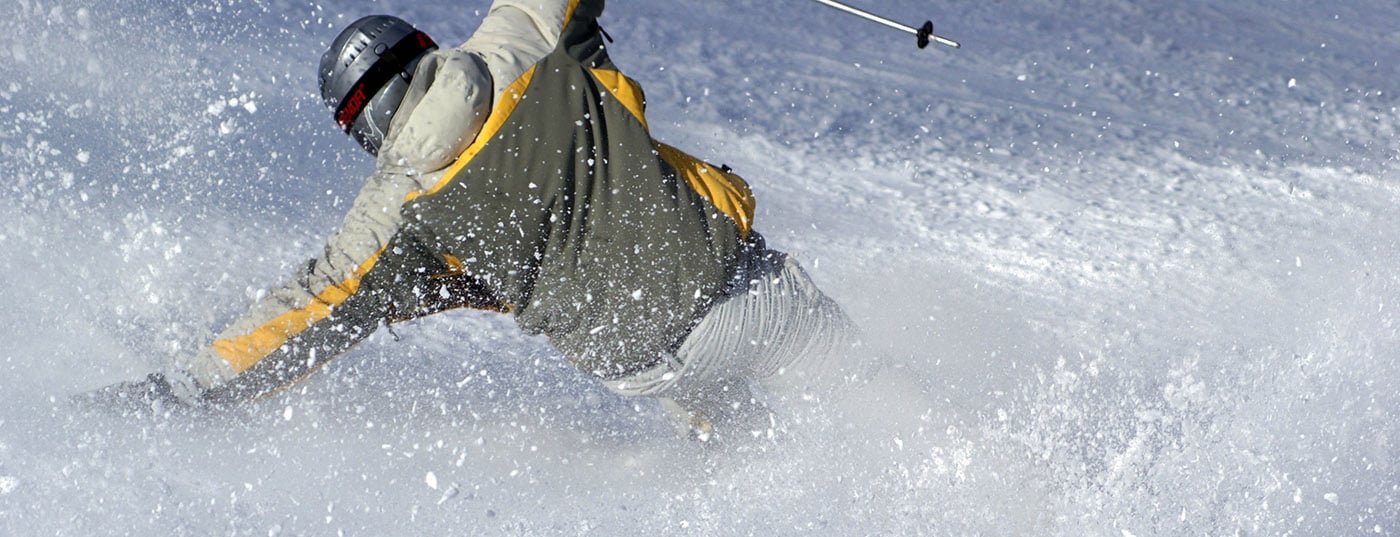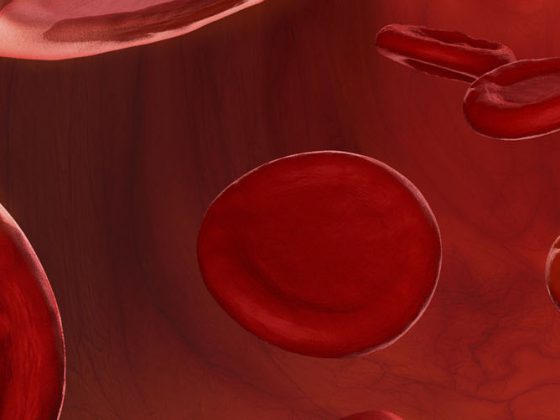“Everything skis” was the name of a 1963 hit by Vico Torriani, which the whole of Switzerland sang. Times have changed slightly, but still the various snow sports call many people to the white slopes, which can be considered positive from a health promoting point of view. As always, the increase in activity is unfortunately linked to an almost parallel increase in injuries, and in addition to the highly vulnerable knee joint, the shoulder joint is often the target of damaging forces occurring in sports.
As with almost all parts of the body, the shoulder joint is subject to so-called overuse injuries and acute injuries.
The overuse injuries are rather rare in skiing, because movements above the horizontal are almost not demanded from the shoulder joint (not like smashing in volleyball or playing tennis or swimming). This means that entrapment of various structures such as tendons or bursa between the humeral head and the coracoid process (acromion) is rather rare. Certain tendon inflammations are conceivable and occasionally encountered due to repetitive movements, as they occur in cross-country skiing.
Common injuries
According to statistics of the accident insurance UVG, the following shoulder/upper arm injuries occur on the slopes (absolute number of accidents in the skiing insured group, as of 2005):
- Bruises, contusions: 2268
- Sprains, strains, tendon ruptures: 1724
- Fractures: 1301
- Dislocations: 892
- Superficial injuries: 8
- Open wounds: 4
Due to the pronounced mobility and thus smaller stability, the dislocations, the so-called luxations, are frequent in the shoulder joint – the most frequent among all joints at all. Diagnosis of this injury is relatively simple and largely possible by observation alone (whereas in a fracture the upper arm is held close to the body, in a dislocated shoulder the arm is held in slight abduction from the body). The treatment also seems clear: The goal is to restore both parts of the joint to their anatomical position as quickly as possible. After a time when this reduction was sometimes performed in a heroic manner directly on the slope, today one is more cautious and usually prefers to clarify the situation radiologically before reduction in search of concomitant injuries (fractures, nerve injuries). Anecdotally – and from my own experience as a race doctor – it can be recalled that it is not easy to set a luxated shoulder by the tight racing suit in alpine skiing, but taking it off beforehand is also anything but easy!
It must be remembered that any shoulder dislocation may result in damage to the capsular ligamentous apparatus (capsular dilatation/tear, lesions of the glenohumeral ligaments), the glenoid labrum, the osseous glenoid rim, the rotator cuff (up to 50% of cases in those over 40 years of age), the humeral head (Hill-Sachs injury), the brachial plexus, or the axillary nerve, which more than justifies careful evaluation. So in situations where with removal a medical facility can be reached relatively effortlessly, heroic action is not advisable!
Risk of recurrence remains an issue
A real problem with shoulder dislocation is primary treatment. It is still mostly done conservatively with immobilization, in special frames or only with the arm support belt, and then with stabilizing physiotherapy. However, the risk of recurrence is very high, it is >90% in under 20-year-olds and still around 30% in over 50-year-olds, so many experts recommend stabilizing surgery already at the first dislocation in young people. However, the issue has not yet been definitively resolved.
Fractures, bruises
Whether in dislocation or isolated, there are many fractures in the shoulder joint area, which statistics also prove. It seems logical to clarify the situation by means of X-ray, although here, too, the situation may be more difficult for the physician (and thus also for the patient). It is not uncommon for fractures not to be seen at all on X-ray, but to be discovered somewhat later during further investigations due to persistent complaints, e.g. on MRI. This in no way implies that injured shoulder joints in skiing must be viewed on MRI in all cases, but an unfavorable outcome on negative radiographs should provoke further investigation. At this point, the importance of choosing the correct radiographic incidences should be pointed out, for which a careful clinical examination can be quite helpful. Also, in the previously mentioned situation, the CT should not be completely forgotten.
According to statistics, the shoulder is also strongly affected by bruises. It should be clear that this term is not a diagnosis, but only an accident mechanism. A direct impact on the shoulder, as can often happen during cross-country skiing, for example, or the enormous force applied to the shoulder in general can result in various serious injuries. Mention should be made of acute shoulder triangular joint injury, acromio-clavicular joint injury, distal clavicle fracture, and rotator cuff injury, which is not unique to older athletes.
It is important to consider these problems during the initial examination, during the (indispensable) follow-up examinations, and especially in the case of unfavorable courses, and to take the necessary further clarification measures (MRI, targeted X-rays, etc.). Also, the help of the specialist should not be called in too late in such situations, because in recent years various promising surgical methods have been developed (mostly arthroscopic) for the benefit of patients.
Only believe self-manipulated statistics?
Leaving aside the famous saying that one should only believe statistics that one has manipulated oneself, the reliable figures provided by the Swiss Accident Insurance Fund (SSUV) clearly show that the shoulder is the target of many physical impacts in snow sports. Also with this joint, trained muscles serve as the best protection, but an (almost) absolute prophylaxis against shoulder injuries is rather to be sought in the behavior on the slopes.











